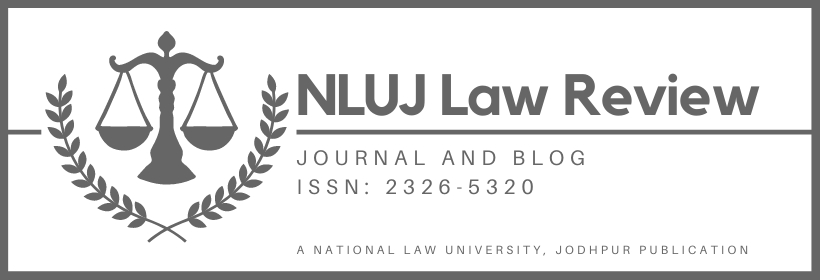The enforcement of asymmetrical arbitration clauses (“AAC”) in India is uncertain, despite being a common occurrence in commercial/lending/consumer contracts. There have been several conflicting judgments in India regarding its enforceability wherein the Delhi High Court has consistently [see here and here] refused its enforceability and the Calcutta High Court on the other hand has allowed it. Since there is enough literature regarding such cases that dealt with asymmetrical arbitration clauses in India and abroad, the authors will not reiterate the same in this blog. Instead, the authors will explore the possible arguments that should be made against such clauses when the Supreme Court of India (“SC”) finally takes up this legal issue in the future.
A. What is an AAC?
Before we flesh out the possible arguments that can be made when the SC finally takes up this question of law, we will attempt to define what is meant by AAC. In simple terms, an AAC grants parties different/asymmetrical rights.
This blog will deal with AACs of two types:
Type 1
For instance, an arbitration clause might grant a right to arbitrate a particular dispute to only one party and not the other party. An example of such a clause would be:
“This contract shall be construed in accordance with and governed by English Law. Sellers shall be entitled at their opinion, to refer any dispute arising under this contract to arbitration in accordance with the rules and regulations of the London Metal Exchange or to institute proceedings against buyers in any Courts of competent jurisdiction”.
This AAC was disputed in the Emmsons case where the Delhi High Court held that it was unenforceable as it only allowed the sellers to invoke the arbitration clause. Another similar clause on the other hand was upheld by the Calcutta HC in the New India Assurance case, wherein the Calcutta High Court held that “There is valid arbitration agreement between the parties because if the privileged party alone can refer the dispute, it can do so only on the basis of the advance consent by the other party recorded in the agreement that the reference would be by the privileged party alone. This unilateral right to make the reference flows from the agreed term in the contract. This ‘option’ does not negative the existence of the arbitration agreement but only restricts its enforceability”.
Type 2
Another form would be when only one party has the right to arbitrate but the other party has the exclusive right to arbitrate or litigate in an appropriate court. An example of such a clause would be:
“Any dispute arising in connection with this Agreement that cannot be resolved through negotiations is to be finally resolved in accordance with the Rules of Conciliation and Arbitration of the International Chamber of Commerce, …The arbitration clause does not restrict Sony Ericsson’s rights to file with a court of a competent jurisdiction a claim for recovery of debts for supplied Products.”
This AAC was disputed in the Sony Ericsson case in the Russian Arbitraz Supreme Court. Since only Sony Ericsson had the right to approach a court, it was not enforced.
B. Possible Arguments that can be made Against an AAC in the SC
AACs lack consideration or mutuality for them to be enforceable
An arbitration clause is a creature of contract and must fulfil the conditions given in the Indian Contract Act, 1872, separately from the general contract. This was crisply explained by the Delhi High Court in case of Union of India v. Bharat Engineering Corporation:
“The conclusions which I have drawn really issue directly from the contractual content of an arbitration agreement. This becomes clear if such an agreement is constructed, step by step, in accordance with the sequence of the definitions in Section 2 of the Contract Act [see the provisions here.] Negotiations start with A saying to B: I am willing to submit the differences (present or future, as the case may be) to arbitration provided you also agree to do the same. This is the ‘proposal’ [Section 2(a)]. If B signifies his account, the proposal is accepted and becomes a ‘promise’ [Section 2(b)]. A is the ‘promiser’ and B the ‘promisee’ [Section 2(c)]. But in accepting the proposal, B has himself promised to submit the differences to arbitration. That was the condition on which the proposal was made. B’s promise forms the ‘consideration’ for that of A and vice versa [Section 2(d)]. They are ‘reciprocal promises’ [Section 2(f)]. As such they constitute an ‘agreement’ [Section 2(e)]. Since it is enforceable by law, it becomes a ‘contract’ [Section 2(h)].”
Now, an argument may be made that an AAC does not have consideration or mutuality. For instance, if A promises to arbitrate but B is free to litigate [see above Type 2] or does not have the right to refer the dispute to arbitration [see above Type I], there are no mutual promises to form a contract. Therefore, AACs are not valid under Indian Contract Act, 1872.
Possible weakness in the argument: This line of argument has been heavily criticized as it wrongly severs the arbitration clause from the rest of contract and looks at it in isolation. The publicists argue that such automatic assumption of the doctrine of severability is misplaced and without any basis, and that the doctrine cannot be assumed to be applicable in all contracts. Instead, they argue that mutuality/consideration in an arbitration agreement is not needed if there is consideration present for the entire agreement [see here and here].
Alternatively, AACs can violate Section 23 of the Indian Contract Act
Section 23 of the Indian Contract Act, 1872 prohibits contracts which are against public policy. The SC in the case of Brojo Nath Ganguly held that contracts having terms that do not keep parties on an equal footing, as they do not enjoy the same bargaining power, may be classified as unconscionable contracts. Such contracts go against public policy, which signifies that it is against public good or public justice.
A general argument before the SC that all AACs violate public policy will not be successful. Instead, the pleader has to show the facts of the case to elicit the difference in bargaining power of the parties coupled with terms unreasonably favourable to the stronger party/elements of deception [if present in the factual matrix]. All of this should point to the fact that the weaker party had no alternative but to accept the AAC in the contract.
Possible weakness in the argument: The strongest argument that can come from the other side is the argument of party autonomy [accepted by the Singapore Court of Appeals in Wilson Taylor] highlights consent of both the parties. This principle has also been affirmed by the SC in a catena of decisions [see here and here] wherein it has considered it as one of the founding pillars of the Arbitration Act, 1996.
Even though this argument is extremely fact heavy, it has been very successful in commercial and consumer cases. If and when the case is taken up in the SC, the pleader can take pointers on fact application to the law from the Sony Ericsson case [Supreme Court of Arbitration of the Russian Federation] and the Orville Arnold case [Supreme Court of Appeals of West Virginia].
AACs go against public policy as it leads to multiplicity of claims and does not bring finality to litigation
As a matter of public policy [accepted by the SC in the Nagabhushana case], there needs to be a finality to litigation and legal action. Otherwise, a rich litigant will succeed in infinitely vexing his opponent by repetitive suits and actions.
If the case that comes to the SC is an AAC belonging to Type 2 [see above] where one party has the exclusive right to bring a claim through arbitration and also simultaneously through litigation, then this argument will hold water. The pleader can successfully argue that such AACs go against public policy and if enforced will lead to multiplicity of claims/ will not bring finality to litigation. This argument is a novel one as it is yet to be argued in relation to AACs in Indian courts, to the best of authors’ knowledge.
C. Conclusion: Personal Comments of the Authors
The rationale for the authors to write this blog is two-fold. First, there is a lot of literature on AAC but very few [including the existing judgments of the Indian Courts] clearly flesh out the arguments with analysis using laws of India. Furthermore, by highlighting the possible arguments that can be made against AAC, the authors contribute to the existing literature when the SC finally weighs in on the validity of AACs in the Indian scenario. Second, the authors are strongly against AACs as India suffers from extreme economic inequality which leads to unequal bargaining power. Rampant use of AACs especially in lending and consumer contracts put the Indian citizens at a disadvantage against corporate powers with deep pockets. We are aware that a lot of arbitration practitioners support the use of AACs [they frequently give the example of the UK and Singapore] and how allowing its enforcement will go a long way in making India an arbitration hub. However, we believe that the economic and social realities of India cannot be ignored for the sake of making India an arbitration hub. This can be sufficiently evidenced from the GIMI Index (World Bank estimate 2021), wherein the countries that have validated AACs are ranked decently well for equal wealth distribution (for instance, South Africa has been ranked 1st, United States has been ranked 51st, etc), whereas India has been ranked 95th, indicating substantial inequality in income distribution. Thus, keeping in mind the lack of feasibility of AACs in the Indian socio-economic landscape, coupled with the legal arguments as discussed by the authors above, it is hoped that when the time comes for the Supreme Court of India to weigh in on the validity of such clauses, they flag it down.
This article is authored by Arkaneil Bhaumik and Siddharth Jain, students at National Law University, Odisha.



